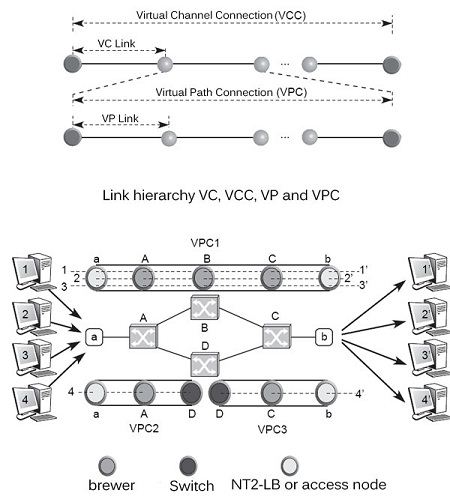The next field contains the reference made to the VCI / VPI (Virtual Channel Identifier / Virtual Path Identifier). The role of virtual paths is to provide semi-permanent connections.
The virtual circuit (VC), the virtual circuit connection (VCC), the virtual path (VP) and virtual path connection (VPC) are defined as follows:
• The virtual circuit or VC (Virtual Channel) is a generic term used to describe the communication capacity for the transport of ATM cells. A virtual circuit identifier, VCI or, conventionally called commutation reference, is assigned to a VC connecting transporting ATM cells between two ATM nodes. The ATM node, wherein the VCI value is translated, is also called an ATM switch.
• The virtual circuit connection, or VCC (Virtual Channel Connection), defines the end to end connection between two access points to the AAL. a VCC is composed by concatenating one or more VC.
• The VP or VP (Virtual Path) is a VC beam. All VC of a bundle have the same end nodes.
• The virtual path connection, or VPC (Virtual Path Connection), consists of the concatenation of one or more VP. The ATM node is then called a fan.
Figure shows the VP / VC hierarchy and Figure Examples of VPC and VCC. The journey of a VPC is established by a routing in intermediate brewers (A, B and C for VP1 in Figure).

The nodes of the upper part of FIG are switches. Brewers do not participate in the administration of the bandwidth of the virtual paths.
 Dinesh Thakur holds an B.C.A, MCDBA, MCSD certifications. Dinesh authors the hugely popular
Dinesh Thakur holds an B.C.A, MCDBA, MCSD certifications. Dinesh authors the hugely popular